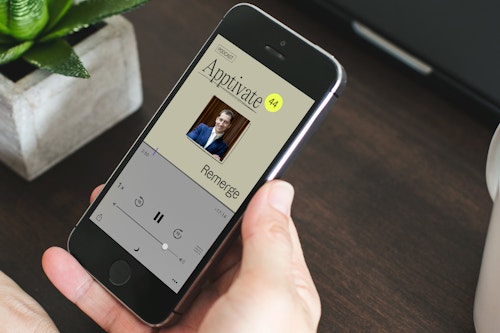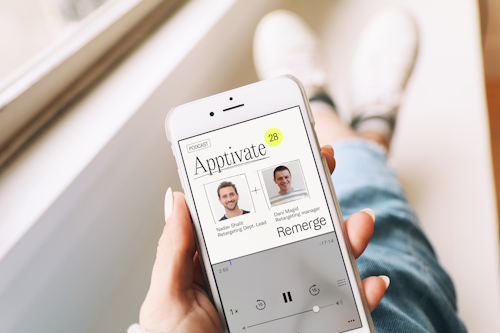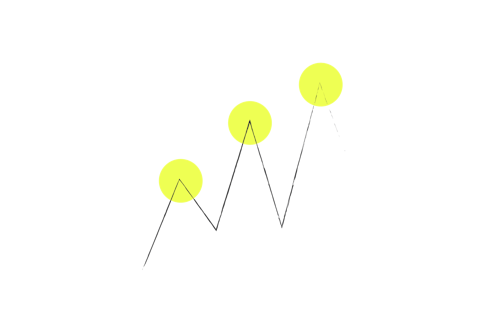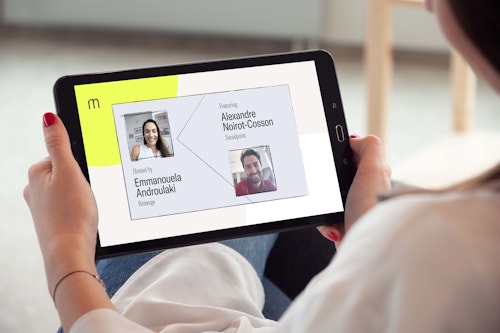Behind the retargeting success of Huuuge Games
October 13, 2020

In September 2020 we joined the PG Connects Helsinki Digital Conference and held a fireside chat with Retargeting Specialist Mor Stone (formerly of Huuuge Games) and Account Manager Valeria Lovato (formerly of Remerge) to talk about the secrets behind the success of Huuuge Games.
Mor shares his insights on the following:
- Huuuge Games’ data-driven approach to reengaging their mobile game users
- How Huuuge Games splits the investment between user acquisition and retargeting
- Huuuge Games’ retargeting strategy and their different audience groups
- How to choose the right retargeting partner
- How to measure success with incrementality
- Huuuge Games’ plans with iOS14 plus a few words of advice
Below you'll find the video recording of our fireside chat, along with the transcript for reference:
Transcript
Introduction
Valeria: I’ll start with a very short introduction. I’m Valeria, I work as an account manager at Remerge. Remerge is the very first custom built platform for in-app retargeting only. And today i have the pleasure to be with Mor Stone from Huuuge Games -- I’d like Mor to introduce yourself and tell us what you’ve been doing at Huuuge games. I’m sure everyone knows what Huuuge Games is in this audience, but it would be very nice to hear from your point.
Mor: First it’s great to be here, thank you for having me. A little bit about myself, I’ve been in this industry of marketing and gaming in the past five years. I joined Huuuge around two years ago, started as a social user acquisition manager for our flagship app, which is Huuuge Casino. And for those who are not really familiar with Huuuge, briefly about Huuuge, we are free-to-play game developer and publisher. Our mission is to empower billions of people to play together. We have twelve offices worldwide and we’re constantly growing at Huuuge.
In the past eight months, I was co-establishing the retargeting team which we find as a very strategic team at Huuuge. By strategic I mean that Huuuge understands the value of retargeting and is willing to invest much effort and budget to this activity, and by leading the team I am in charge of bringing back Huuuge players to play our games by finding them all around in multiple channels across the mobile scape and bringing them back by offering them rewards and presenting them with new features and gaming experiences.
A data-driven approach
Valeria: Great thank you, you were mentioning that it’s been a journey in the last eight months building up the retargeting department. So when did it become relevant to do retargeting for Huuuge and based on which considerations on your side?
« Retention in Day 7 can be around 10-15% meaning that
Mor Stone
around 90% of new players who just installed leave the game within 7 days since install »
Mor: I say it’s more than a point in time, it’s a point in data. I mean, we realized that it something we see across all gaming, that retention in Day 7 can be around 10-15% meaning that around 90% of new players who just installed leave the game within seven days since install. So at least for us, it has represented a big potential for our business and we know that we can actually offer them another experience, because they probably haven’t experienced all the features that we have to offer in all the gaming experience, so you know that by applying a user-centric approach we can make them part of a loyal Huuuge customers by offering them a different game experience.
Also we’ve done an analysis. We wanted to look at the probability of a player to organically play the game after X days since he last played the game. This helped us to define the “churned” term and it means that after X days this player is a churned player. I mean, he's not gonna come back to the game and this helped us also in the retargeting activity.
Another reason is, as you know, is that our games have a significant DAU. When you have so many people that are playing your game it’s getting harder and harder to bring back players who haven’t heard of our games and haven't played our games. And also it's getting more expensive sometimes than bringing back a player who actually knows you and played your game. And the social casino we know that they have a long shelf life and are high LTV users and if we can bring them back to our games with a different experience that they can actually benefit from.
Investment in Retargeting
Valeria: That’s great to hear. Like you were mentioning as well, how it can be cheaper to actually reengage a user or prevent that the user churns instead of acquiring new users? Also probably related to the maturity of the games that you are dealing with. At the moment, for the most mature games you have, what would you say is the split in the investment between user acquisition and retargeting?
Mor: So regarding the split, so we don’t only do retargeting activity for mature games. We also run retargeting for our new apps. I mean, it depends on the campaign. If it’s a ROAS campaign, that’s what we’re measuring - Day 7 ROAS - we also look at other metrics, but that’s mostly it. It’s mostly meant for our large user base games that drive most of our revenues. But we also run DAU campaigns which are being measured by the amount of DAU, by the Cost per DAU and by retention.This is also for games that are relatively new, not the large user base and also games that are based on in-app ads monetization. So that’s how we split between the apps.
Between the UA, I can say that retargeting is constantly growing and constantly keeping up and increasing its share among the marketing team and it’s definitely a very respectable share by now because as you said the majority of the games.
Huuuge Games’ Retargeting Strategy
Valeria: You were also mentioning a little bit along the main lines what is your retargeting strategy. When you talk about ROAS for example, KPIS rather than your DAU activities, can you tell us more about your retargeting strategy and what is the goal of the different segments that you are running for the games?
Mor: So we discussed the campaign types and we also have our audience segments and audience types. So it can be a segment of LTV and recency, meaning that the players who have a hundred dollars LTV for example who played 30 days ago and we want to bring them back to the game. But it can be also audiences of players who also engage with specific features. Players who for example participated in big sales, we know that they’re more likely to purchase during such a sale and we want to present them with a specific other sale that could suit them.
And also another audience could be clubbers, we have clubs in our games and we want to turn players who didn't join a club to join a club and actually get more rewards and play with their friends in the clubs and get more social in the app. So we have many audience types. That's our strategy along with our campaign types.
We want to ensure that we deliver the right message, like a message is the right promotion or thing that they could find interesting and the right treatment. For example, players who didn't play for 60 days, we know that we should give them some reward or gift to help them get going and start playing the game. It can be a protocol gift, everyday something to make them more loyal and keep playing for longer periods. And so, i mean, yes, it depends on that.
And I would say one word about measurement, because that’s also part of our strategy. We have our uplift dashboard, our internal uplift dashboard that helps us to actually measure the incrementality. Cause we know that especially for retargeting, players that you target could’ve anyway maybe performed an action cause sometimes they’re active or recently active players so you really want to measure the incremental value, the actual value of spend on retargeting.
So we have our own groups. Groups of test groups and control groups and that’s how we can truly measure players who’ve seen our ads versus players who didn't see our ads and know the incrementality value of our ads.
And one last thing. The eventual goal of Huuuge across the marketing team is to define where the next dollar would go. So it could go to retargeting or it can go to UA: so that’s why we also compare our activity with the UA activity and that’s eventually where we want to be.
On working with different partners and measuring success
Valeria: Great, So if i understood it correctly, it’s a very data-driven approach, what you have in place for Huuuge Games and you try to address the different segments with a very customized messaging as well. In terms of measurement, of course there is the classical Return on Ad Spend (ROAS) rather than their re-engagement but you're also trying as well to estimate what is the uplift.
So you mentioned the very hot topic of the last three years - very interesting to see that Huuuge Games is working on this internally. I think it’s a very key topic at the moment and also related to the other question that I had for you today. What is the value of running more channels - multiple channels as well - on the same user base at the same time?
Mor: I guess that most companies that run retargeting use Facebook as their major source, and Facebook is indeed a great partner to run retargeting campaigns but i would say that unlike UA campaigns where you really rely on Facebook’s sophisticated targeting and optimization, which i would say there’s no other like that, but for targeting we have a predefined list.
We have our list that we extract from our own database, players who actually played the game before those who came to play the game before.
« For predefined lists, I would say that DSPs become super relevant because we eventually want to find these players and offer them new things »
Mor Stone
And for predefined lists this i would say that DSPs become super relevant because we eventually want to find these players and offer them new things and Facebook we can say that the match rate is only around 65%, sometimes 70%, but we have the other 30% and even more that we can reach via DSPs all across the mobile space and offer them what we want to offer and it can also be more cost effective because we know that Facebook being a great platform is usually more expensive. We can pay less for the same users and even maybe target them with sometimes a better user experience because if they started playing another game, in another mobile app, and Remerge shows them some ad of our game, then it makes them more likely for them to come back to play the game than sometimes when a user scrolls the Facebook feed, and they’re not currently looking to engage with any game they might just scroll and they're not open-minded than they are if they are playing another game of if they're in another app.
But I would say eventually we want to diversify our risks so we run with both but we compare them and once we have the uplift dashboard, that would be even a better comparison. We’re not currently comparing partners but we would, because then we could divide the audience that this is being shown on Remerge and this is being shown on Facebook
We will see the uplift of these two partners.
What a strong partnership looks like
Valeria: So the most important thing is to reach your users and also considering that most probably social casino apps, I mean, is a very competitive field so you really need to reach your users and to keep them engaged in the game.
When it’s about choosing a retargeting partner, what would you say are the most valuable features or aspects for a strong partnership?
Mor: I would say the first one is scale. When we onboard a new partner, we really invest our efforts and our budgets to the success of this partnership. We want to make sure that this partner has enough access to inventory that we can scale the activity together and the partnership could last long, and that reminds me of Warren Buffet. He said our favorite holding period is forever, and that’s what we aim for our partners. We say that our partnership with our partners is meant to be forever and that's what we want and when a partner can scale, then definitely that can last for a long time.
Another thing is communication with the POC: because we know that sometimes beginnings aren't so smooth. Sometimes there are integration issues or results - initial results are not as you expect them to be and you need more time, so being in touch with the POC who is proficient, analytical, professional and communicative is also very important because we need them to be available for us for that super important part.
We find that the key reason to stay with partners and last thing if I should give three reasons would be the reputation in the industry and the added value they can bring to us. So we do also sometimes consult with our friends in the industry about partners and reputation it can be performance, like bid-optimization by segment and AI solutions, can also be the added value that they bring which is advanced analytics, can be creative innovation, creative personalization, and things we can learn from our partners.
We’re always looking to learn new things and that’s also a reason to choose a partner.
« We’re always looking to learn new things and that’s also a reason to choose a partner. »
Mor Stone
Words of Advice
Valeria: Thank you and a very last quick question before having a look at the questions that the audience just wrote to us. What would be your advice for app marketers that want to approach retargeting for gaming?
Mor: The advice would be to start the journey by coming out of the data, we want to first understand the game from a data point of view. We want to understand our players, we want to look at metrics like cohorted payers rate, we want to know at what point they usually make a purchase, or at what level they get stuck or at what point they leave the game. So that’s one thing.
And that would take great communication with the BI team, and not only but also product and CRM teams but mostly BI teams. You want to be very synced between the retargeting BI teams because everything must be backed by data.
Another thing, when you do retargeting, you should really know your game. I’ve done UA for the same game, Huuuge Casino, but I didn’t know the game as well as I know it now. I did play the game and obviously I knew the features but now I really know all promotions and events, and everything that’s going on in the game, because we have to communicate that to our players and we have to understand what they like better, and what makes them excited.
So also, communication with the CRM team, the monetization team of the app is very important because they're in charge of the game promotions and the events. Last advice, I think I already said that go for incrementality testing especially for retargeting, the uplift dashboard helps us to really understand the incremental value.
« When you do retargeting, you should really know your game. »
Mor Stone
Questions from the audience
Valeria: Thank you. We still have a couple of minutes for some questions. The first one would need more than a couple of minutes because it’s asking about the retargeting strategy with iOS14.
Mor: So we got a little time now, and we thought about what we can do. There’s various things that we started doing, which is, we want to not rely solely on IDFA because there are more IDs and identification where we can find players especially on Facebook. We can collect emails, we can collect Facebook IDs, and we already do so in our games. We can offer players some benefits in order to leave their emails and connect via Facebook IDs and we have more plans going forward.
Also looking to increase our consent rate, our opt-in rate. So that’s another test we will run soon. A pop-up message to really test and measure the consent rate. That’s mostly it. We know that retargeting will hurt from that but we will find solutions definitely.
Valeria: Sure that’s something to learn on how to deal with. Another question: How important is push notification in comparison to paid retargeting ads?
Mor: So as we said the CRM team, that's also the team that shows push notifications and email marketing campaigns, but they do it mostly for players who were active during the last 7 days - that's mostly the players they reach and we mostly reach players who are inactive, usually
7 days or more that’s why we usually don't collide with our activities. But it’s very important, and that’s also free, we pay one time, but every push is free unlike every impression. We see that it gets players to come back at a pretty high rate daily but in the retargeting activity we are there for those who did not come back with push notifications or those who maybe disabled push notifications and don't see any push. So were there to really target players that push notifications did not help to engage to the game.
Valeria: Very last question, very last minute. So do you compare placebo ads to measure incremental lift? It’s about the methodology that you apply for your uplift measurement. Which methodology do you apply to your uplift measurement in house? Would it be Intent-to-treat? Placebo ads?
Mor: It’s not placebo ads, we actually segment our audience to two groups and sometimes three. And for one group we are able to show one message and for another group we are able to show but a different message or a different ad and we have a group which we don’t touch, so they will not see any of our ads. Then we actually, over time we see the performance of each group and we can compare in our dashboard this benchmark group who didn't see anything against those who did see our ads. That’s how use it mostly, if i understood correctly
Valeria: Perfect, Mor. I think we’ll need another session to explain uplift measurement. I think that was all, we’re in time thank you so much for being our guest today and for this opportunity to be at this conference.
Mor: Sure thank you for having me, it was lovely and I hope to see you again soon!
Get the latest app marketing insights
Join our newsletter





